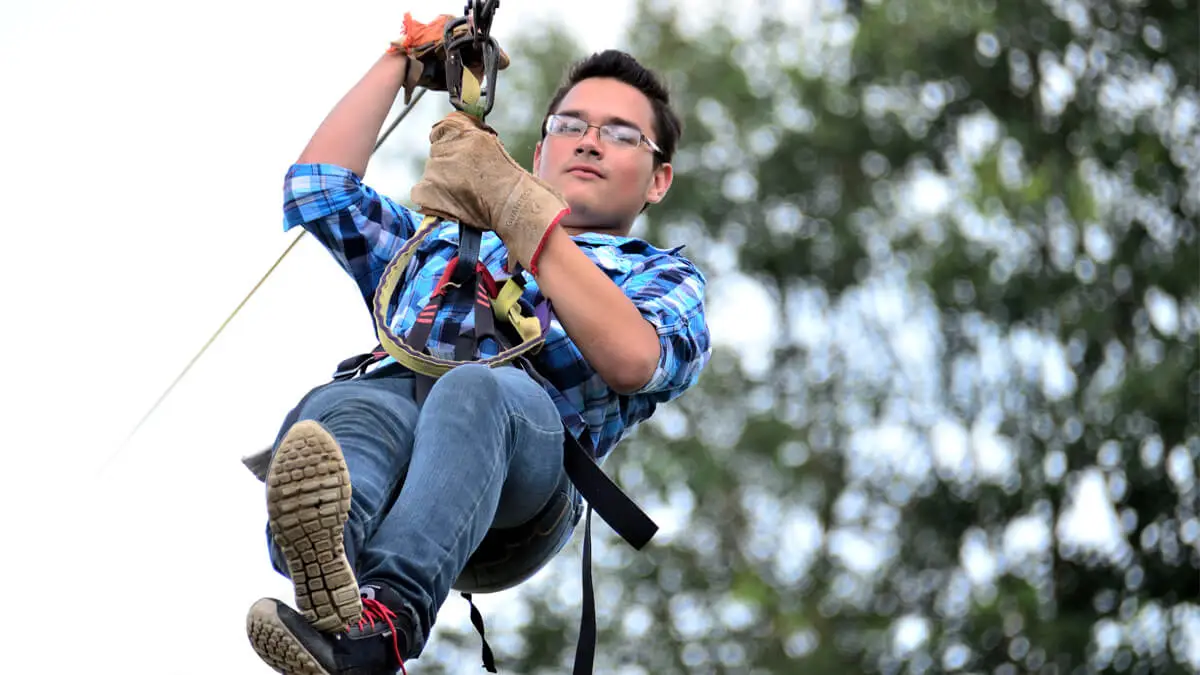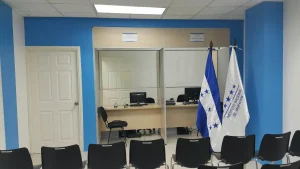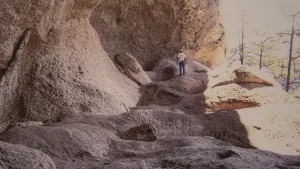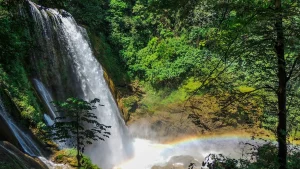Adventure Activities in Honduras

Honduras has a great offer in Adventure Activities
Eco Finca San Silvestre
This old fruit farm became the Eco Finca San Silvestre in 2007, so that through the promotion and implementation of responsible and sustainable tourism it protects and preserves the local flora and fauna. In it you walk through a tropical forest that surrounds you and infects the well-being of the natural wealth of the site. As part of the tour you can also take a refreshing dip in the cool and crystal clear waters of the San Silvestre River.
Zacate River Trail
This route is another way to explore the Pico Bonito National Park, in which water is the protagonist from start to finish and you will be able to meet various species of tropical birds, such as toucans and swallows. Through the path you follow the course of the Zacate River and its crystalline waters, sometimes closely, sometimes far enough to appreciate the landscapes of the river, until you reach a beautiful waterfall about 40 m high.
Guaruma Trail, La Ceiba, Atlántida
A community and environmental conservation experience from its origins. This path, traced by the young volunteers of the Guaruma Organization, begins in Las Mangas, one of the 72 communities in the buffer zone of the Pico Bonito National Park. It is divided into two: the Path of Flowers and the Path of Trees.
Young natives of the Cangrejal River basin guide you through 2 km of natural adventure, suitable for all ages, in which you find orchids, medicinal plants, fruit and timber trees, various species of birds, such as hummingbirds, mot mots, ducks of water, white herons, egrets, orioles or swallows.
This option to explore the Pico Bonito National Park allows you to have direct contact with the daily life of the Las Mangas community and takes you through all the living nature of the Flowers and Trees, through a hammock bridge with very good views , to the crystalline ravine «La Muralla» where you can also bathe.
La Canasta Trail, La Ceiba, Atlántida
As happens all over the world, many times the striking part of a place, sooner or later, ends up being part of its name. This happens with the trails of the Pico Bonito National Park. Like this one, named after the way the adventure begins: crossing the Cangrejal River in an aerial metal basket.
It begins in the community of El Pital, where you can buy handmade embroidery and possibly see its manufacturing process. In addition to crossing the river hanging in a basket, you put your adventurous spirit to the test with a walk that rewards you with a pool hidden among the trees.
Yojoa lake
It is the only lake of volcanic origin in Honduras and the largest reserve of fresh water in the country. In 2005 it was recognized as a Wetland of World Interest by the UN, through the RAMSAR convention. The place offers multiple options for tourists to spend several days in the area with a wide variety of restaurants, recreation centers with swimming pools and water entertainment, and zoos.
It is surrounded by large mountains that reach heights of more than 2,600 meters above sea level. Some of these mountains are classified as national parks, among them are: Azul Meámbar National Park on the southern shore of the lake and Santa Bárbara to the north.
Pulhapanzak Falls, Yojoa Lake
When the Rio Lindo course runs out of soil, it drops 43 meters at Pulhapanzak with enough flow to cause a ‘roar’ carried by the fine breeze that is felt some distance from the falls. The spa also offers a farm where you can share in the milking of cows and the manufacture of cheese, and lodging in cabins. Somewhat less well known is that on the site there are important pre-Columbian traces of a stone causeway and a plaza surrounded by 4 mounds from the classical period (600-900 BC).
The Rio Lindo continues its course with some fast sections that you can go down on a giant float (river tubing) for 2 hours. If you’re looking for more adventure, you can zigzag up to the waterfall on one of the 12 zip lines that also take you into the nearby forest. Pulhapanzak, part of the area of influence of Lake Yojoa, is in the village of Buenaventura, 17 kilometers from Peña Blanca and overflows with that cliff always covered with water that you cannot stop photographing.
Capiro Reef
The fishermen counted on some “pedreros” between Punta Sal and Punta Izopo. And in 2009, exploring divers discovered an underwater ridge of largely living coral that forms the Capiro Reef. About 8 km of coral bar in three colonies, submerged in the center of Tela Bay, protecting its beaches of transparent water at 28-32ºC.
The Capiro reef is home to the colors of a large number of Caribbean fish and various species of coral that form the furrows and ridges that rise from 25 m to 10 m in depth. The predominant species of the bar is lettuce coral, which in some areas occupies 90% of each coral m2. To get there you travel between 7 and 8 km from the coast. Here you can take PADI courses for beginners and experts, or immerse yourself in the 20 sites identified throughout the underwater novelty of Tela, another unexpected adventure.
The Canopy of La Campa, Thank you, Lempira
The colonial city of Gracias, located on the slopes of the Celaque National Park, is one of the oldest cities in Honduras. Even more important is the inestimable value of the Lenca spirit that lives on in the city and its nearby mountains. Bastion of the Lenca culture, Gracias is a window to the descendants of the most important indigenous people that the Spanish encountered when they arrived.
If you like nature and strong emotions, you cannot stop trying the canopy in La Campa. At 600 meters long and 200 meters high, it is the longest and highest canopy in Central America.
Canopy in Pico Bonito, La Ceiba, Atlántida
It consists of 9 high adventure cables. Each cable has its own personality and offers you an exhilarating experience. The last cable, which is 600 feet long, will take you into the dark jungle above the river, at a very fast speed. Include in the tour a short walk where you will learn a little about the flora and fauna within Pico Bonito.
Rafting on the Cangrejal River, La Ceiba, Atlántida
The Cangrejal River currents cross the Pico Bonito National Park and the rest of the Nombre de Dios mountain range, forming some of the best rapids in Central America. Few cities in the world share with La Ceiba the possibility of practicing rafting so few kilometers from the city center. Whether you are a beginner or an expert, you live an exciting natural experience in El Cangrejal in rapids with difficulty levels 2, 3 and 4, assisted by qualified personnel and with equipment that meets international requirements for rafting.
Experienced guides give you adequate training for what will come downstream, and already on the raft, with all the safety measures checked, you are ready to fight against the force of the river and take advantage of it to circumvent its course. Winter is the best time to go rafting in a larger Cangrejal. The canopy, walks, riverhiking and various river activities are excellent complements to its main attraction.
Enjoy and travel along the turbulent class III and IV rapids of the Cangrejal River.
It includes:
- All taxes and fees
- Handling charges
- National park fees
- Lunch
- Professional guide
La Mosquitia, Thank God
The most remote area of Honduras is also the most biodiverse and the one with the highest ethnic concentration. Here is the largest tropical rainforest in America after the Amazon, made up of: the Río Plátano Biosphere Reserve, which since 1982 is a World Heritage Site of Humanity; the Patuca National Park; the Tawakha Anthropological Reserve; the Cruta Caratasca Wildlife Refuge; and the Rus Rus Biological Reserve.
Venturing in La Mosquitia, assisted by expert guides, is exploring one of the most extreme areas of the continent. On the other side of the village of Las Marías, you enter a world without time in which the trees do not let you see the sun, you live with wild animals and travel downriver, overcoming jungle, savannas and lagoons, until you reach the Caribbean to tell the tale. it could be the best adventure of your life.





